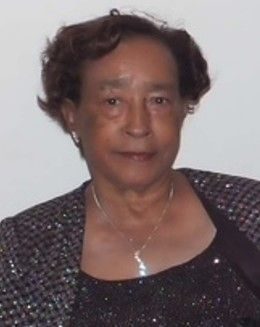Missourians with disabilities and seniors could lose at-home care under new eligibility algorithm

Nearly 8,000 seniors and Missourians with disabilities could lose at-home care over the next year after a new eligibility algorithm went into effect this week, a spokesperson for the state health department told The Independent.
Starting Oct. 1, Missouri’s Department of Health and Senior Services implemented a change in the scoring algorithm they use to determine eligibility during annual reviews and enrollment for those receiving help with everyday tasks like going to the bathroom, getting dressed and taking their prescriptions. The assistance is part of a Medicaid-funded program called home and community based services designed to provide an alternative to those who would otherwise need to receive institutional care.
That change, according to the department, is designed to help ensure those who truly need the services receive them, and those who don’t — for instance, because their conditions have improved or they’re not severe enough to qualify — are removed.
“We want to ensure those with higher acuity needs are receiving the care they need,” said DHSS spokesperson Lisa Cox. “That is what this transformation is about — to ensure we are providing the right services, in the right setting, at the right time to those who would go into a facility placement if not for [home and community based services].”
But advocates are raising alarm that certain people who still need services will lose them, causing their health to decline or forcing them into institutional settings like nursing homes.
Jennifer Gundy, who runs a center for independent living in southwest Missouri, which provides in-home care support for 370 people, estimates 18% of her clients will fall off the rolls.
And most of them will still be in need of services, she said, including cases of those with severe diabetes, mobility issues, complicated medication regimes and other issues that are eased by current assistance but will worsen without it.
“So that’s our concern,” she said. “And we’ve been voicing that concern with the state for probably the last two years,” she said.
Joel Ferber, director of advocacy at Legal Services of Eastern Missouri, said there are “truly needy folks who are going to lose services.”
Legal Services of Eastern Missouri has been working with national advocacy groups to analyze the new algorithm and its effects, and provide guidance. One client they identified, a 70-year-old woman who receives 40 hours of weekly paid help, won’t be eligible after her review, according to LSEM. She weighs under 100 pounds and has had a stroke.
Without a caretaker, she won’t be able to make herself meals or bathe, and has no family in the area. She may have to be hospitalized or go to a nursing home.
State Rep. Deb Lavender, a Democrat of Manchester, said thousands will lose services, “without any support from the state” to fill in the gap.
“They’re going to be people who have received services for years,” she said, “and we have provided that for them — to then drop them because they don’t meet the new algorithm doesn’t seem right.”
Cox said 7,818 people are at risk of losing services, but she didn’t provide an estimate of any possible net change, saying the program will “continue to add more participants every month due to the increase in needs of our population.” New people will also qualify based on the new algorithm, adding to the population, she said.
From 2021 to last month, the department used both the new and old algorithm, so that anyone who qualified on either basis could qualify for the program. Cox said thousands of people have gained access to services under the new algorithm who wouldn’t have qualified on the old calculation: She said 7,708 people have gained eligibility under the new algorithm since it was introduced in Nov. 2021.
There were around 68,000 people monthly on the program last fiscal year, Cox said.
The new algorithm has been years in the making.
The legislature in 2017 grew concerned with the home and community based services program “just blossoming” in participation and cost, said Jessica Schaefer, program director for home and community based services in a recent training.
To cut the budget, the legislature in 2017 raised the threshold for eligibility. It also capped costs for services at a lower level.
The program is jointly funded by the state and federal government, and states vary widely in how they run the programs.
The department found those changes weren’t entirely effective, Schafer said — that some people who needed services most didn’t qualify anymore — so they launched a “transformation” of the eligibility criteria. It was designed to be more accurate at directing limited services to the correct people.
The “transformation is about ensuring those most in need of care receive the services needed to remain independent in their community,” Cox said.
There have been several delays in implementing the new algorithm — most recently because of federal rules tied to accepting American Rescue Plan Act funds.
The state has generally characterized those who will lose coverage as people who don’t have needs significant enough to qualify in the first place.
In a slideshow for providers during a recent training, the state recommended when delivering the news of ineligibility to individuals, that they “exude confidence” and “put a positive spin on ineligibility,” along with connecting them to other resources and expressing sympathy.
Because the department has been providing two scores, advocates can see which clients will not qualify under the new algorithm and have been able to track it.
Advocates say they’ve repeatedly brought up concerns with the state based on clients they see are desperately in need of services who will no longer qualify.
“The only thing that we can do is just go ahead and allow them to do this, and then if there’s enough people that fall off the services and end up going to the nursing home, going in the hospital, having lots of problems because they’re not getting the services, then we can look at doing a class action lawsuit,” said Gundy, the southwest Missouri advocate.
“Which is really sad, because those people have to get hurt or have really bad health problems for something to get done.”
States across the country have made similar cuts to the program, based on automated decisions, including in Arkansas, where the algorithm was successfully challenged in court.
Legal Services of Eastern Missouri and a group of national advocates published a toolkit for providers and participants to understand the changes and track those who lose services.
Emily Paul, project director at Upturn, a national organization that advocates for equity and justice in technology, has been involved in that analysis.
“What we understand in general is that automation is a tool that states are using to deal with inadequate funding for these programs, and to create a rationale for who doesn’t get services,” Paul said.
“Underfunding really drives the need to have this whole rationale for trying to distribute the resources and trying to make claims to fairness and objectivity within a system that is not really set up to actually meet people’s needs,” she said. “And so that’s the fundamental issue. States can still try to make better or worse choices about how they allocate the resources.”
Miss Clipping Out Stories to Save for Later?
Click the Purchase Story button below to order a print of this story. We will print it for you on matte photo paper to keep forever.

